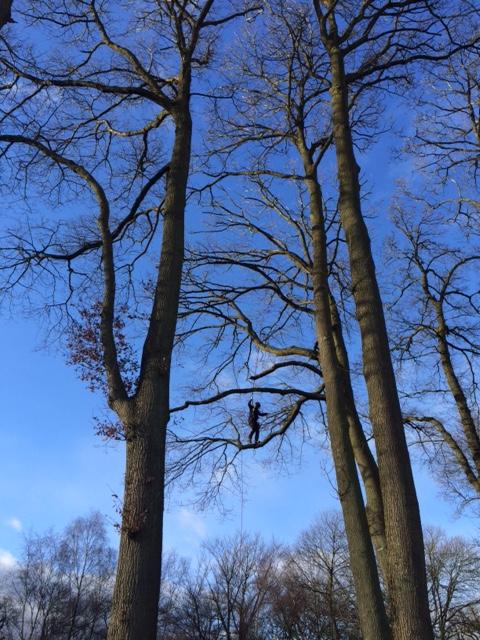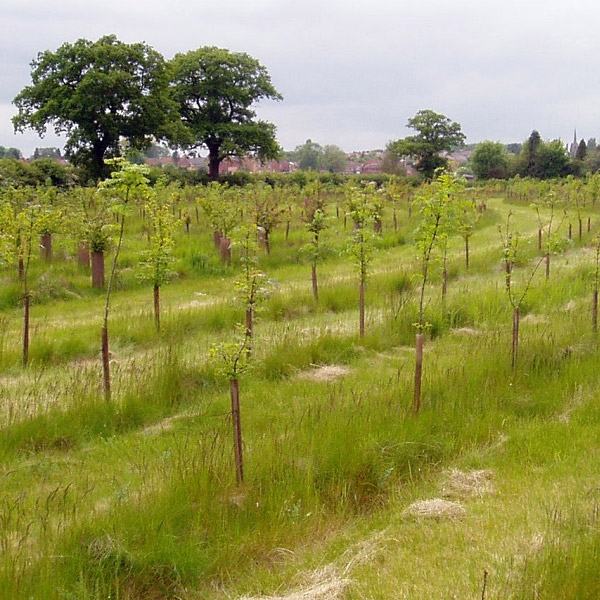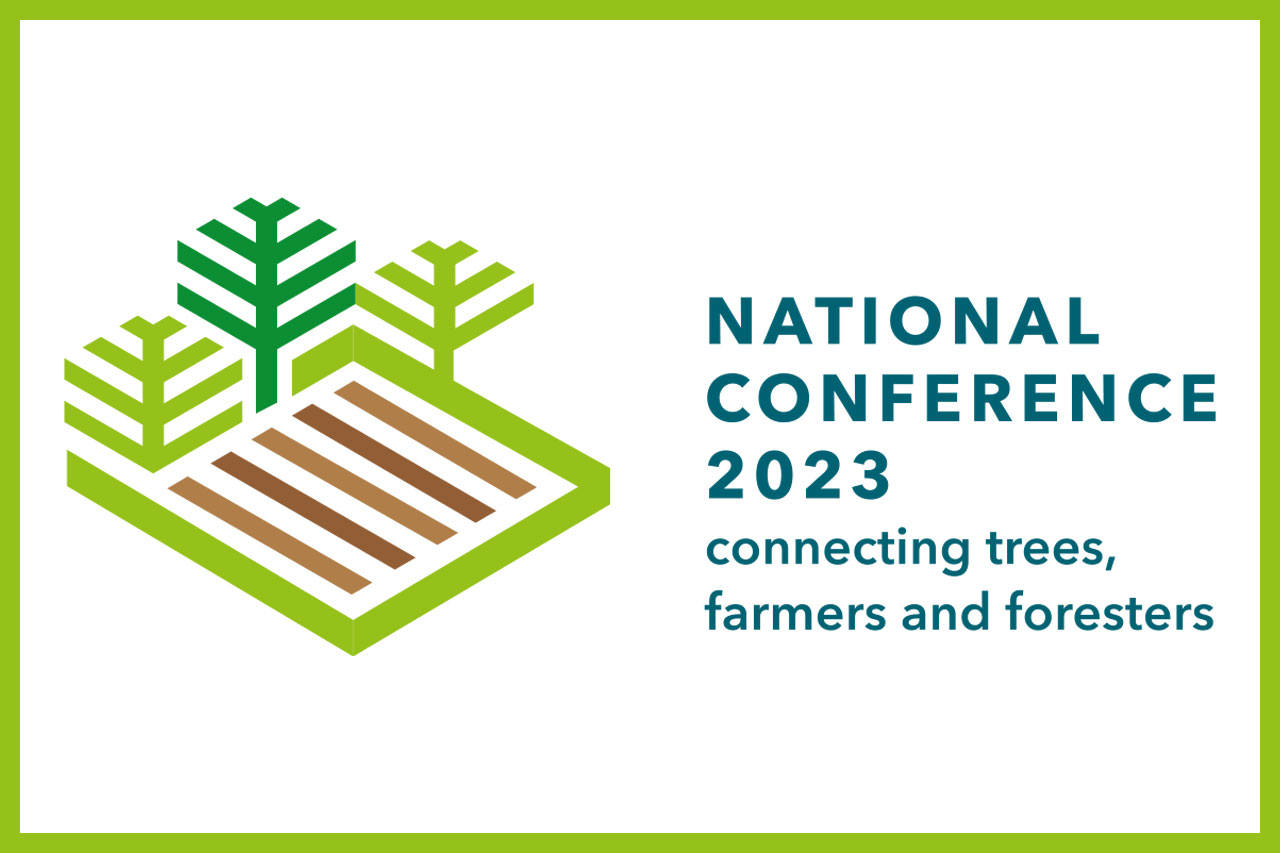-
Posts
864 -
Joined
-
Last visited
Content Type
Profiles
Forums
Classifieds
Tip Site Directory
Blogs
Articles
News
Arborist Reviews
Arbtalk Knot Guide
Gallery
Store
Freelancers directory
Posts posted by JaySmith
-
-
I had to produce one many years ago when we were working on a large housbuilding site doing work on Plane’s. There was limited info on the AA website so I used a generic template found online through a Google search ‘coshh template’ and used information on the found on the AA website to populate the relevant fields, such who is at risk, hazard type, route of exposure, control measures etc.
You try contacting the AA to see if they have a template you could use.
-
I know for a firm local to me who used to get a lot of leads and clients through the BNI network. This was many years ago and is probably like the yellow pages, everybody used to use it where as now it is dead. I personally wouldn’t use the yellow pages to find a tradesman, I’d ask friends for recommendations or look on social media platforms and look at their reviews and previous works before making a choice. Marketing and how people engage and buy from businesses has drastically changed in recent years. Facebook and Instagram is what most seem to use nowadays and have better results with. I think mediums like Yell and BNI have had their day and IMO represent a poor return on investment.
As a lot of firms have been set up by climbers and are one man bands, there are a lot of firms who pool and share resources amongst each other. I have friends who sub to each other on bigger jobs bringing in kit and guys to access larger jobs. In my view this is a better way of operating than trying to get recommendations from an accountant at a BNI event.
-
 3
3
-
-
23 hours ago, dumper said:
The builder could still be in business, take overs and buyout mean small pockets of land just get forgotten till someone starts to ask questions
Very true, although if the builders acquired the land to develop through a sale it should have been registered at the land registry. Lots of the pieces of land at the land registry that show as unregistered are indeed legally owned but because there haven’t been any sales against them there hasn’t been a requirement to register them. Often if land has been in a family for many years and there hasn’t been a sale it may not be showing as registered but is still owned. I think at the last review approximately 15% of land was still showing as unregistered. Often the builder will hold onto the ownership of the land and not transfer it, especially if it forms an access to ‘phase two’ for example.
If the builder goes under then as you say that becomes more problematic. Usually a bit of digging can show who the owner is, even if it isn’t showing as registered at the land registry.
-
 2
2
-
-
7 hours ago, waterbuoy said:
If housebuilder went bust does the land not revert to 'The Crown' (or does that just relate to comapnies which have been dissolved)? If so then it might be worth contacting The Crown Estate.
If somebody dies without a will or blood relatives then technically the land can be transferred to the crown, although this is relatively rare. -
More often than not there will be an owner, whether that be highways, parish council, district council, private land owner, housing association, management company etc etc. What does the land reg say? Does it say ‘no registrations found’ for example?
-
Possibly phytophthora? Especially if it has covered a decent sized area as the fungus moves in the wind for dispersal.
-
 1
1
-
-
Was given a pair like these given to me once, think they stayed in the workshop and came out for a manky blackthorn hedge once.
Stihl Protect MS chainsaw protection sleeves – F.R. Jones & Son
WWW.FRJONESANDSON.CO.UK -
Page 60 gives the info using stop go boards. Depends on traffic flow and speed limit.
Most TM company’s will often do the initial recommendations for free from my experience. If they involve large scale road closures or big diversions then they may want money upfront for the drawings.
-
Take a look at the link below, should give you all the info you need
Good book to keep in the truck
-
 2
2
-
-
A treemotion goes pretty small. I’m about 26in waist and that is near the end of the adjustment.
-
There has been issues with getting machines for what seems like years now. A mate of mine was relieved of a number of tools by some nocturnal visitors lately and has had a nightmare finding replacements (mainly Stihl).
Have you tried Ernst Doe’s, I think they have a branch in Maldon or in that vicinity?
-
Looks like Rigidoporis ulmarius, can be similar to Perenniporia fraxinea.
-
 3
3
-
-
27 minutes ago, doobin said:
As far as I’m concerned, finance was an absolute no brainer at the rates I bought at. I’ve always worked on needing one day a month with a machine to pay its finance for that month. Small kit obviously, but lots of it.
Part of the problem with where we are at is that finance rates have been artificially low for such a long period of time and this has allowed people to over extend themselves with effectively free money thrown at them. Years ago if you saw a neighbour or somebody down the street driving a new BMW you’d think he was doing well for himself or was middle management etc. Now every man and his dog is driving round in a BMW, Audi, Mercedes because of the introduction of cheap rates and the case that car leasing is more people than using pound notes. Many years ago you had credit cards but you couldn’t walk into a shop and finance a coat through a third party (maybe a store card), I brought a rab coat from a high street retailer then other day and was offered the ability to finance it through a broker. Peoples consumer habits have changed and this has lead to over extension.
However that being said it has allowed firms to invest in new kit and allowed many to start up which is all good when the times are rosey and consumers are having work down, like during the lockdowns. But when the rates rise, Mrs Miggins doesn’t have the conifer hedge trimmed and firms are fighting for a smaller piece of the market it is a spiral to the bottom. I think it will affect the one man bands who have recently set up more, they may have a truck and chipper on finance, rely on residential works as they cannot access larger contracts yet and that is a precarious position to be in, as we know diversification is key. Maybe this will be the start of a larger correction. So many things at play here without even looking at the over inflated property market and ratio of earnings to property value.
-
 1
1
-
-
18 hours ago, john87 said:
If honey fungus spreads by means of them black stringy bits, what is the function of the toadstool looking bit?? Do the spores from them blow in the wind and spread it, or does it only spread by means of the underground black stringy bits??
Say you chopped up the stringy bits, does that kill it [seeing as it is no longer attached to the main body of the thing] or will each stringy bit grow to form a new fungus of its own??
john..
The FFB that honey fungus produces contain spores which the fungi uses for reproduction and to further the advancement, these are dispersed and can spread via the wind like you say. If you sever the rhizomorphs and remove the foot source this will limit the spread to a certain extent but as the roots of an affected tree/stump are contained well underground it is hard to eradicate the food source entirely. Far better to try and keep the trees in the area healthy via mulching and watering and be proactive. Some advocate the use of Biochar but I’ve need personally used it.
-
 1
1
-
-
13 hours ago, Dan Maynard said:
I guess ultimately you need to discuss it with the customer and agree an approach. They may be happier if you remove all grindings, and certainly no harm in it, I'm just not convinced it'll make that much difference going forward. The fungus will be spread well outside the grind area anyway.
Of course there is likely to be HF outside of the grinding pit but by removing excess matter it may help reduce the spread to some degree, albeit not entirely. The only way to effectively attempt to remove HF would be to excavate and remove the soil and debris within a huge area because as we know the web extends underground to a huge degree, not always practical in a garden setting without causing carnage. A far better approach is to the try and keep the retained stock healthy, I’m thinking mulching, watering, removing dead/struggling plants in an attempt to contain the spread. Did a job many years ago whereby we removed the tree and stump with HF, took out a couple of other smaller shrubs that appeared to be struggling with limited growth and poor vitality. The customer then had a firm come in and excavate, install a root barrier and back fill. We were working for the ground working firm so I never went back but it would be interesting to see if it did work.
-
If there is honey fungus onsite we’d always remove all the grinding and as much of the spoil as possible to try and limit the spread. However with honey the rhizomorphs will extend well outside of the stump area and rooting area so you are fighting an uphill battle.
Not sure if you are replanting but if you are looking to replant I’d leave it a season or so to let the ground settle, young trees are under increased stress when planted as they’ve lost the safety of the nice little nursery with water and nutrients on tap. Sometimes the honey in the soil can be the final nail.
As honey colonises stressed trees, it is worth trying to ensure the trees/shrubs onsite are as heathy as possible.
-
Traditionally it was usually the case that if you had a transit you went for a 6 inch chipper and a 7.5t truck an 8 inch or bigger. This correlation usually worked as the bigger chipper needs bigger capacity to chip into. Not to mention the added wear and tear with towing a heavier machine.
The older 6 inch machines weren’t a patch on the newer ones, I’m thinking Timberwolf 150 v 230. The 230 is much more economical onsite, less sneeding, faster chipping etc. Trying to push an 8 inch machine around on gravel can be a challenge, if you have two or three of you onsite it is doable, how easy it is to push up a steep driveway will depend on how big the guys are!
In terms of using more diesel I reckon that people who leave the chipper running constantly when there isn’t a bit of brash in sight probably spend more on diesel than somebody with an 8 inch machine who only turns it on when it’s actually needed. A mate of mine fires up the chipper as soon as the first saw starts up, then moans at the end of the day moans how much diesel it’s used and how dear it is to fuel up!
A lot of your chipper selection will depend on the work you predominantly do, a bigger chipper on the right job will obviously save time. For me if I had a transit to chip into then I would go 6 inch. If you have a larger truck with a bigger chip box then I would go 8 inch. Pro’s and con’s of both when looking at 6 inch v 8 inch.
-
 3
3
-
-
22 hours ago, GarethM said:
I'm interested, but can already guess they'll beat the climate change drum expecting farmers to sacrifice land and trying to change subsidies, I receive nothing and manage mine out of my own pocket.
If they wanted to solve the land part of the problem, go speak to the mod and the king. Thousands of acres of crown estate and Salisbury plain etc which they could start reforesting from the road side without any real sacrifice or objection.
I’m sure the climate change aspect will feature heavily for sure.
Good point about crown estate/Salisbury plain etc, we seem to be primarily focused on urban planting at the moment to provide shading, carbon sequestration, water absorption etc bit that brings its own issues and challenges. Planting in hard sites in the street landscape is hugely expensive, conflicts with utilities, driveways, visibility splays, narrow footways, future footway damage. One thing I have noticed recently is that some councils and organisations have created roles for tree planting coordinators or project managers but they have little knowledge of the urban street landscape in relation to the conflicts listed previously and believe we can literally plant anywhere.
I was on a call the other day with a guy from the Woodland Trust and he was tasked with engaging with landowners to improve tree stocks. From my understanding there are grants available so maybe worth looking into?
Trees for Landowners and Farmers
WWW.WOODLANDTRUST.ORG.UK
Helping you to plant lots of trees with grants and funding schemes.-
 1
1
-
-
11 hours ago, GarethM said:
Sadly that is not going to be possible, shoots use set aside areas as they are used in rotation and as a result change yearly.
The only decline is generally urban areas as apposed to farmland, farmers manage the land with many having replanted hedgerows as we know our environment.
I’m not sure it is just an urban decline and need for trees in urban areas, over the years I’ve seen hedgerows in rural areas taken out to make larger fields and also for construction and house building.
To counter that I have also seen new hedges planted, however in the same way that single trees require aftercare so do hedgerows. A large vineyard near me has recently put in new multiple hedgerows and also plugged gaps in others with new plantings. Since they have planted them there seems to have been no aftercare and some of the small trees are now so engulfed in brambles that they’ll soon be dead, if not already.
As we know there are issues in the urban and semi urban environment with the net loss of trees to make way for building but I believe that there are still losses in the rural areas and gains can be made. I would be interested to see what is proposed in the ICF seminar and how they plan on engaging with farmers to make way for trees when there is pressure on arable land. I personally haven’t been involved in farming since the Ford 4610 and 6610 were all the rage, so about 20 odd years ago!
-
I use an iPad whilst on-site with a rugged case around it. I like it as the lanyard goes across the body and holds it in place. Only downside is when it rains and water gets under the screen protector the touch screen stops working. Personally I use notes on it for jobs and writing spec’s. Apps like What3Words help to plot locations and photos for jobs or to jog your memory.
There are apps like Arboro that can streamline things and quotes, calendar, RA’s etc I suppose it depends how far you want to go with it.
-
If this happened I’d be lanyarding in to something quickly, remove the material from the failed anchor point to take the increased load of the primary anchor, work out why it failed was it too small? Was there decay that made it fail? We’re you using a rigging point above it? If the tree is sound re anchor and then carry on. So many variables, especially if rigging was also involved
-
Looks very much like armillaria. Look in the soil and under the bark for the black bootlaces that’s often appear. Looks to be damage to the buttress root and also broken tarmac in the picture, could have been an inlet for the pathogen if there is damage and exposed wood/roots.
If there are targets near the tree I’d be assessing the crown for signs loss of vitality and dieback and also the roots and base of the tree for signs of decay. If a tree is already struggling or has damage to it sometimes the colonisation of honey fungus can be the final nail in the coffin.
-
 1
1
-
-
10 hours ago, GarethM said:
Around the world you can argue planting trees can be beneficial to the environment of those countries, think reversing desertification that sort of thing, the UK and most northern counties not so much as we have large amounts of forest and managed and productive farmland.
What is the point of planting trees on valuable arable land ?. What is your goal, carbon dioxide reduction at the expense of growing it in the 3rd world?.
We do have large amount of woodland in this country, however in many locations that is steadily decreasing. Not all arable type land is used for food and crop production, I’m thinking of land that is used for things like shoots, set aside etc. This land could have trees planted upon it. For land that is used for crops maybe sections of it could be used for trees and shelter belts as opposed to planting full on woodlands. This approach could benefit the land in many ways including adding biodiversity and wildlife to the area.
The ICF has an event coming up which looks at integrating trees into farmland, it would be interesting to see what the ideas on this are.
 National Conference 2023: Connecting Trees, Farmers and Foresters - The Institute of Chartered Foresters
WWW.CHARTEREDFORESTERS.ORG
National Conference 2023: Connecting Trees, Farmers and Foresters - The Institute of Chartered Foresters
WWW.CHARTEREDFORESTERS.ORG
This ground-breaking hybrid conference looks at how we can integrate trees into the farmed landscape and build... -
I don’t have the inspection notes to hand but I would say the ganoderma has been present for between 3 and 5 years, this is before I became involved. The tree was noted to have deadwood/decline in the crown so was reduced a couple of years ago, since the reduction there hasn’t been a great deal of new growth. There are now four brackets from memory on the tree at different locations and when sounded with a hammer decay fairly extensive across a large area. I will be carrying out a Picus on the tree within the next couple of months to ascertain the amount of sound wood and what works are required.
Ultimately if you are concerned with the tree and are purchasing the property I would be raising the issue with the solicitors.









Bad graft in beech or embedded wire
in Picture Forum
Posted
Never personally seen a failure at the graft. Have two lines of mature copper beech trees relatively local to me and some have failed at ground level over the years due to Kretzchmaria or Meripilus and have snapped out at included bark unions but not at the graft.